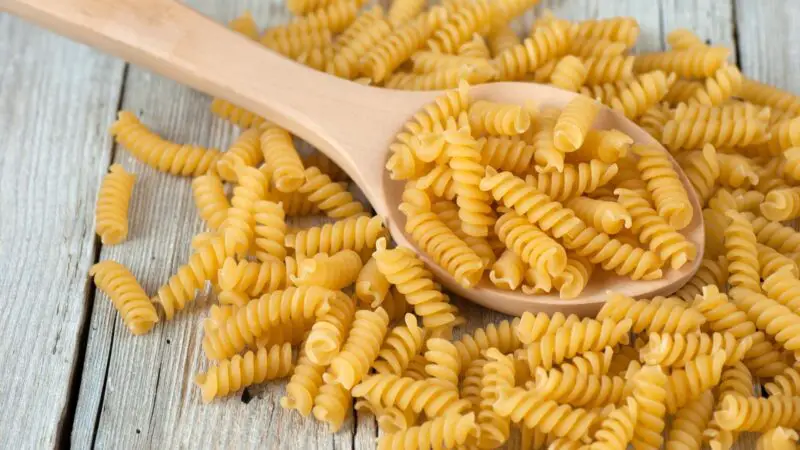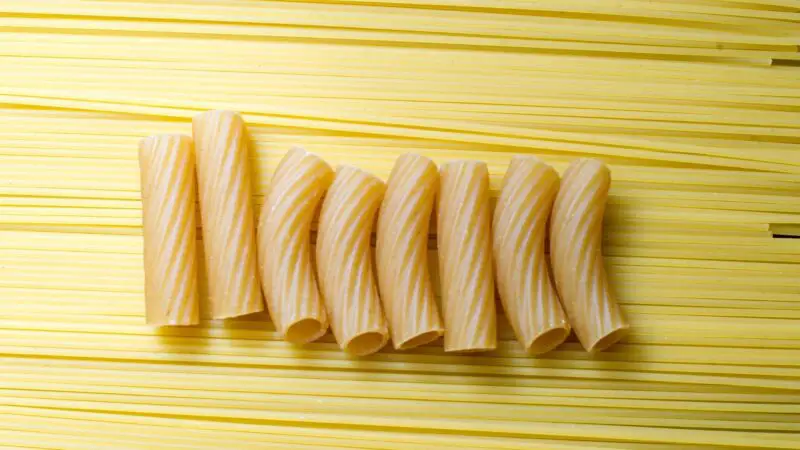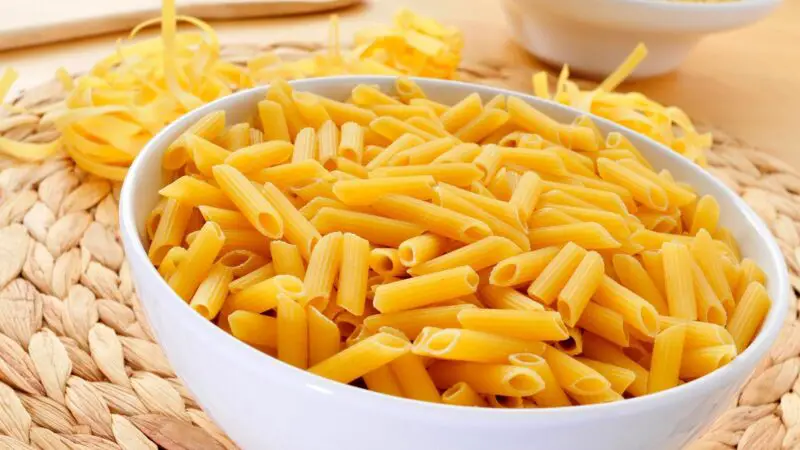Pasta is the one food that almost everyone enjoys. Nobody can say no to a plate of spaghetti or macaroni with a nice sauce, cheese topping, spices, ketchup and mayo, or anything else you can think of. Pasta is extremely versatile and simple to prepare. It is not, however, suitable for guinea pigs.
Guinea pigs cannot eat pasta. Pasta has a lot of carbs because it is made out of flour and guinea pigs cannot digest the flour very well. If you want to avoid the stomach problems and indigestion in guinea pigs, do not feed them pasta at all.
Nutrition Facts of Pasta

Here are the nutrition facts for 100 g (3 oz) of pasta, boiled, enriched with salt:
- Energy (kcal) – 221.2
- High in carbs – 43 g
- Protein – 8.1 g
- Fiber – 2.5 g
- Sugars – 0.78 g
- Fat – 1.3 g
- Thiamin – 0.38
- Riboflavin – 0.19
- Niacin – 2.36 mg
- Vitamin B6 – 0.07 mg
- Pantothenic acid – 0.16 mg
- Calcium – 10 mg
- Iron – 2 mg
- Magnesium – 25 mg
- Phosphorus – 80 mg
- Potassium – 63 mg
- Sodium – 1.4 mg
- Zinc – 0.7 mg
- Copper – 0.14 mg
- Manganese – 0.44 mg
Is Pasta Bad for Guinea Pigs? | Possible Risks

- No scurvy prevention – Pasta doesn’t have vitamin C at all. When guinea pigs lack vitamin C in their diet, they are more prone to scurvy. This disease can even be fatal. Some of its symptoms are bleeding, rough coat, loss of appetite, weight loss, and diarrhea.
- Cardiovascular problems – Pasta has some amounts of sodium (salt) and fats. These amounts might not be too high, but it is enough to potentially affect the blood pressure and health of cardiovascular organs of the guinea pig.
- Urinary problems – In pasta, there are two minerals which are bad for cavies; the calcium and phosphorus. They are good for creating strong bone tissues, but this doesn’t apply for grown cavies. Excess of such minerals in the body of the guinea pig could result in bladder and kidney stones, painful urination, bloody urine, or urinary infection.
- Unhealthy weight – Pasta is filled with carbs and calories. Carbs and calories are the main things that cause rapid weight gain.
Fun Facts About Pasta

- Pasta is technically a type of noodle.
- First book reference for pasta was back in 1154.
- There are more than 600 pasta types, with over 1300 names.
- Most popular pasta types are macaroni, spaghetti, and penne.
- Pasta can also be baked or mixed with soups and stews.
- Traditionally, pasta is cooked not fully soft, and this is called ‘al dente.’
- The ancient Greeks believed that a god Vulcan was the inventor of the pasta-maker.
- Ancient Romans fried the pasta.
- Uncooked pasta has a shelf life of approximately a year.
- Italy makes 1.432.990 tons of pasta annually.
- National Pasta Month is in October.
- At first, pasta was eaten in China, not in Italy! This dates back to 5000 BC.
- Thomas Jefferson was the first to bring pasta to the USA. He introduced this food to America in 1789.
- The typical serving size for pasta is 100 g. We all eat much more, let’s be honest!
- In the past, people were fooled to believe that pasta grew on trees. Back in 1957, the BBC showed a documentary for spaghetti in Switzerland, i.e., spaghetti crops! It showed people that picked spaghetti from bushes!
- The most popular pasta brand in Italy is ‘Barilla.’
We have also made a full list of foods that guinea pigs can and can’t eat (150+ Types of Foods). Be sure to also check our recommended products page for everything you will ever need to assure a happy life for your guinea pigs. Hope this information was helpful and you have found the answer you were looking for.
List of Sources
Nutrient Requirements of Laboratory Animals: Fourth Revised Edition
The Effects of Diet on Anatomy, Physiology and Health in the Guinea Pig
